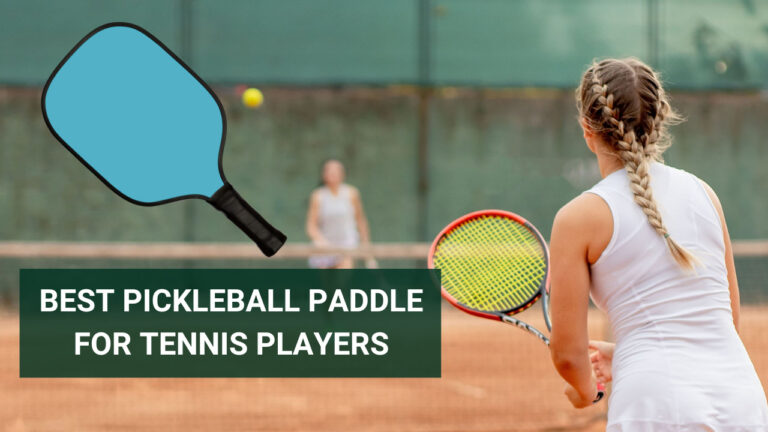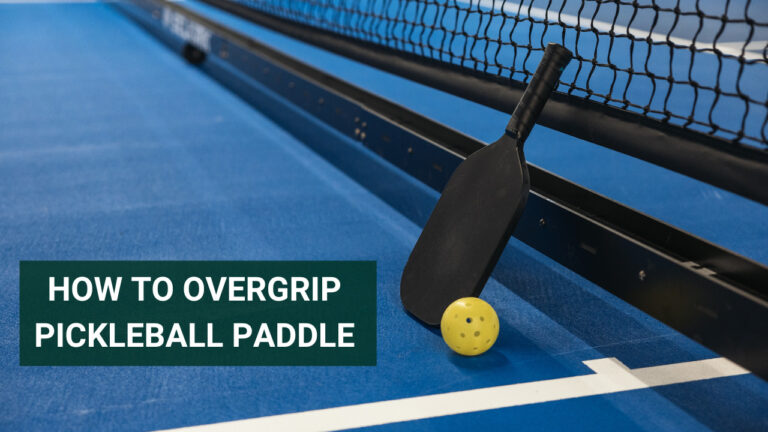How To Determine Your Pickleball Rating – Steps Explained
Get ready to unleash your pickleball prowess! With its explosive popularity and thrilling gameplay, pickleball has captured the hearts of players worldwide. Wondering how you stack up against other players on the court?
To determine your pickleball rating, evaluate your skills, seek feedback from experienced players, and participate in organized play or skill assessments conducted by certified instructors.
Look no further! In this guide, we will walk you through how to determine your pickleball rating in just three simple steps. So grab your paddle and let’s dive into the exciting world of pickleball ratings!
3 Steps – How To Determine Your Pickleball Rating
Step 1: Understand the Different Levels of Pickleball
- Familiarize yourself with the different skill levels in pickleball, ranging from 2.0 (beginner) to 5.0+ (advanced tournament player).
- Each skill level represents a specific set of abilities and allows for fair competition against players of similar proficiency.
- Understanding the ratings system is crucial before determining your own pickleball rating.
- The skill levels provide a clear framework for assessing and comparing your own skills in relation to other players.
- Knowing the skill levels will help you accurately gauge your pickleball proficiency and track your progress in the sport.
Step 2: How Are Pickleball Players Rated?
- Pickleball ratings can be determined through self-rating or participation in tournaments or leagues with skill assessments.
- Self-rating involves evaluating your own abilities based on established criteria provided by organizations like USA Pickleball.
- Competing in sanctioned events allows for objective evaluation of players’ performance.
- Participating in tournaments or leagues with skill assessments leads to an accurate assessment of skill level.
Step 3: Improve Your Pickleball Rating
- Practice regularly to improve your pickleball rating.
- Focus on developing specific aspects of your game that require improvement.
- Seek guidance from experienced players who can offer valuable insights.
- Consider taking lessons from certified instructors to learn new techniques and strategies.
Remember, improving your rating isn’t just about winning matches; it’s also about honing your skills, understanding game strategy, and maintaining good sportsmanship on the court.
Determining your pickleball rating is essential for gauging your progress as a player while providing opportunities for growth within the sport.
Whether you aspire to compete at higher levels or simply want to enjoy friendly matches with fellow enthusiasts, knowing where you stand will enhance both confidence and enjoyment during gameplay.
The Different Levels Of Pickleball
Pickleball is a sport that has gained immense popularity in recent years, attracting players of all ages and skill levels. One of the key aspects of pickleball is the rating system, which helps to determine the level of play for each player. Understanding the different levels of pickleball can be helpful not only in finding suitable opponents but also in setting personal goals for improvement.
The Range of Pickleball Ratings
The ratings in pickleball range from 2.0 (beginner) to 5.0 (professional). At each level, there are specific skills and strategies that players should possess to compete effectively against others at their level. For instance, a 2.5-rated player may have basic knowledge of strokes and rules but lacks consistency and accuracy.
Skills and Strategies at Different Rating Levels
As you progress through the ratings, you will notice an increase in skill level and competitiveness among players. A 3.5-rated player will generally have better control over shots, improved court positioning, and more strategic gameplay compared to lower-rated players.
Progression and Increasing Competitiveness
Moving up further to a 4.0-rating requires even higher proficiency with shot placement, agility on the court, and advanced strategies such as dinking or third-shot drops.
It’s important to note that these rating guidelines are just generalizations as every player is unique with their own strengths and weaknesses on the court.
Understanding your current rating can help you set realistic goals for improvement while also providing guidance on finding competitive matches that challenge you without overwhelming you.
How Are Pickleball Players Rated?
One important aspect of pickleball is player ratings. But how exactly are pickleball players rated? Let’s dive into this fascinating topic.
When it comes to rating pickleball players, there are a few different systems that can be used.
- One common method is the skill-based rating system, where players are assigned a rating based on their skills and abilities on the court. This can include factors such as shot selection, strategy, consistency, and overall performance.
- As well this method is used for rating pickleball players is the self-rating system. In this system, players rate themselves based on their own perception of their skills and abilities in the game. While this may not always be completely accurate, it provides a starting point for determining a player’s level.
- Moreover to these individual player ratings, there are also team ratings in some leagues and tournaments. These team ratings take into consideration not only individual player skills but also teamwork and communication On the court.
- Determining pickleball player ratings requires an evaluation of various factors including skill level, self-perception, and performance in both singles and doubles matches.
By understanding how players are rated, you can better assess your own skills and work towards improvement on the court!
How To Self-Rate Your Skills In Pickleball
Here we have a table to self-rate in pickleball:
| Skill Level | Self-Rating Guidelines |
|---|---|
| Novice | New to pickleball or minimal experience Just started playing or have little knowledge Struggle with basic shots and rules Inconsistent performance |
| Beginner | Basic understanding and ability in pickleball Familiar with basic shots and rulesAble to maintain a rally with some consistencyLimited experience in organized play |
| Intermediate | Developing skills and understanding in pickleballComfortable with most shots and rules Consistently maintains rallies during playCompetent in both singles and doubles play |
| Advanced | High level of proficiency and experience in pickleballSkilled in various shots and strategies Consistent and reliable performance Competes at a higher level in organized play |
| Expert | Exceptional expertise and mastery in pickleballHighly skilled in all aspects of the gameDemonstrates advanced strategies and tacticsCompetes at a competitive and elite level |
How To Improve Your Pickleball Rating
Improving your pickleball rating is a goal that many players strive for. Whether you’re aiming to move up from a 3.0 to a 3.5 or trying to reach the elite level of a 4.5, there are steps you can take to enhance your skills and boost your rating.
- Practice, practice, practice! The more time you spend on the court honing your skills, the better you’ll become. Take advantage of open play sessions and find dedicated partners who are also focused on improving their game.
- Seek out opportunities for coaching or lessons. Working with an experienced instructor can provide valuable feedback and help identify areas where you need improvement.
- Moreover, watch high-level matches and study professional players’ techniques. Observing how they move around the court and strategize can offer insights that you can apply to your own game.
- Don’t forget about physical conditioning too! Building strength and stamina through exercises like cardio workouts will give you an edge on the court.
- Always be open to learning from others. Play against different opponents with varying skill levels – this will expose you to different playing styles and challenge you to adapt your game accordingly.
By following these steps consistently over time, you’ll see improvements in your gameplay which should translate into an improved pickleball rating. So lace up those sneakers and get ready to elevate your game!
Difference Between 3.5 and 4.0 Pickleball Player
The difference between a 3.5 and 4.0 pickleball player can be significant in terms of skill level and gameplay.
| Rating Level | 3.5 Player | 4.0 Player |
|---|---|---|
| Skill Level | Intermediate-level player | Advanced and experienced player |
| Foundational Skills | Solid development | Greater control over shots |
| Rules Understanding | Good understanding | – |
| Serving | Consistent | – |
| Accuracy in Rallies | Some accuracy | – |
| Strategy and Placement | – | Improved strategy and placement |
| Consistency | – | Generally more consistent |
| Footwork | – | Better footwork |
| Shot Selection | – | Better shot selection |
| Court Awareness | – | Better court awareness |
| Competitiveness | Lower compared to 4.0 player | Higher compared to 3.5 player |
By understanding the differences between various rating levels like 3.5 versus 4.0 players can help individuals gauge their own progress within the sport while also providing insight into areas that may require improvement or further development on their journey towards becoming a higher-rated pickleball player.
What Is Self-Rating in Pickleball?
Self-rating is crucial in pickleball to assess your skill level accurately. It helps ensure fair competition by matching you with players of similar abilities.
When entering tournaments or leagues, providing your self-rating helps organizers place you in the right skill divisions for competitive matches.
Consider factors like serving, volleys, shots, placement, strategies, and positioning when self-rating. Be honest to avoid unfair matchups. Remember, a higher rating reflects proficiency, not superiority.
Accurate self-rating contributes to a balanced pickleball community, so take time to reflect before assigning your rating. Enjoy more satisfying matches for all!
The benefits of having a high pickleball rating
Having a high pickleball rating can bring numerous benefits to your game and overall experience as a player. Here are some of the advantages that come with having a high rating:
Competitive Advantage
A high rating indicates that you possess exceptional skills and proficiency in the game. This means you are more likely to be matched up against similarly skilled opponents, resulting in challenging and exciting matches.
Increased Opportunities
With a high rating, you open doors to participate in higher-level tournaments and events where you can compete against top-notch players from around the world. These opportunities allow you to showcase your skills on bigger stages and gain recognition within the pickleball community.
Personal Growth
Achieving a high rating requires dedication, hard work, and continuous improvement of your game. As you strive to maintain or improve your rating, you will inevitably grow as a player by refining techniques, strategizing better plays, and gaining valuable experience through competitive play.
Recognition and Respect
Having a high pickleball rating earns you respect among fellow players who recognize your talent and achievements within the sport. Your accomplishments become an inspiration for others seeking to elevate their own game.
Networking Opportunities
Being part of the elite group of highly rated players opens up networking opportunities with other passionate individuals who share your love for pickleball. This allows for connections with like-minded players who may offer insights, guidance, or even potential partnerships for future doubles matches.
Attaining a high pickleball rating brings both tangible benefits such as increased competition opportunities as well as intangible rewards like personal growth and recognition within the pickleball community
USA Pickleball Tournament Player Ratings
The USA Pickleball Tournament Player Ratings classify players based on skill level to ensure fair competition. The rating system uses match results, opponent ratings, and game scores to determine player abilities accurately.
Mathematical equations analyze win/loss records and margin of victory to calculate the final rating. A high rating grants access to challenging tournaments, competitive teams, and exclusive events. The system maintains fairness and enhances gameplay in pickleball.
Conclusion
In conclusion, determining your pickleball rating is crucial for understanding your skill level and finding appropriate opponents. Consider your abilities, experience, and knowledge of the game for an accurate self-assessment.
Honesty is key to ensuring fair competition. Utilize the rating system, join tournaments or leagues, and seek guidance from experienced players or certified instructors to gauge and enhance your skills.
Set realistic goals and prepare to elevate your game on the pickleball court.
FAQs
How do you get your pickleball rating?
Your pickleball rating can be obtained through self-rating or by participating in tournaments or leagues where skill assessments take place.
What is a 3.5 level pickleball player?
A 3.5 level pickleball player is typically considered an intermediate-level player with solid foundational skills, a good understanding of the rules, and the ability to serve consistently and rally with some accuracy.
What does a 3.0 pickleball player mean?
A 3.0 pickleball player is generally classified as a beginner-level player who is still developing their skills. They may have a basic understanding of strokes and rules but may lack consistency and accuracy.
What is a 4.0 pickleball player?
A 4.0 pickleball player is considered an advanced and experienced player in the sport. They exhibit greater control over their shots, improved strategy and placement on the court, and are generally more consistent in their play.
How do I know if I am a 3.0 pickleball player?
To determine if you are a 3.0 pickleball player, you can assess your own skills and compare them to the characteristics of a 3.0 level player. Consider factors such as your consistency, knowledge of strokes and rules, as well as your ability to maintain accuracy and control during rallies.






